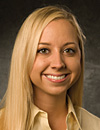The New "Big Data" Toolbox
/ LIVE FROM THE ACFE GLOBAL FRAUD CONFERENCE
LIVE FROM THE ACFE GLOBAL FRAUD CONFERENCE
By Mandy Moody, CFE,
ACFE Social Media Specialist
The term “big data” has changed the way accountants, auditors and fraud examiners look at what used to be rows and rows of Excel spreadsheets, or — before that — what used to be pages and pages of handwritten company ledgers. When we say “big data,” we are not referring to data that is trendy or hot; there aren’t groups of data sets cruising around the web or in our email wearing skinny jeans and tight v-necks. The term “big” describes the vast amount of information lying in the structured and unstructured data every business produces. Gartner defines big data as “high-volume, -velocity, and -variety information assets that demand cost-effective, innovative forms of information processing for enhanced insight and decision making.
Vincent Walden, CFE, CPA, led a Pre-Conference Session today, “Taking Data Analytics to the Next Level,” with the goals of giving attendees the tools they need to capture, organize and filter data that could ultimately catch or stop a fraud. Walden is Senior Manager of Fraud Investigation and Dispute Services at Ernst & Young and specializes in text analytics, forensic data mining and electronic discovery services.
From internal surveys and research (structured data) to external emails and social media (unstructured data), there is a seemingly endless amount of information available for collection and analysis.
“With ever-mounting data and legislative requirements, companies are looking for ways to incorporate analytics to sift through the mountains of data collected during the normal course of business,” Walden said. “By incorporating forensic data analytics, investigators can query 100 percent of the data through a series of tests or filters.”
These tests and filters sift out relevant transactions and classify or rank the remaining transactions for further human review. The analytics are a combination of rules-based tests, text mining, data mining, clustering and visual analytics. But, how do you go about organizing what data you want and how you want to capture it?
Perhaps some of the best advice anti-fraud professionals could receive, Walden described the top ways to work with your company’s IT department to get the analytics you need:
- Design your analytics based on fraud risks
- Determine your required data sources (structured and unstructured)
- Prepare a data-request memo (specify table names, desired data output and time frame)
The last section of Walden’s session covered the optimal ways to implement “big data” initiatives. “Fraud investigation is not a linear process, especially when it comes to data analytics,” Walden said. “It is okay to start anywhere and go everywhere, so long as you have a defined scope and key objectives for the analysis.”
Walden advised attendees to remember to:
- Recall the Forensics Analytics Maturity Model.
- Leverage multiple data sources — both structured and unstructured.
- Identify links between structured and unstructured data and bring them together in a stronger platform.
- Use search-around functionality to analyze data from multiple aspects.
- Use geocoding and heat maps to identify high-risk regions.
Find more news and in-depth Conference coverage at FraudConferenceNews.com.